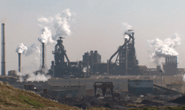Market Data

October 13, 2020
IEA: Pandemic May Set Back Emissions Targets
Written by Sandy Williams
The 2020 pandemic has caused more disruption to the global energy sector than any other event in recent history, says the International Energy Agency in its newest World Energy Outlook. “Whether this upheaval ultimately helps or hinders efforts to accelerate clean energy transitions and reach international energy and climate goals will depend on how governments respond to today’s challenges.”
The COVID-19 crisis has set back green energy investment and as a result IEA has extended its forecast for net-zero global emissions from 2050 to 2070. IEA data forecasts a 5% drop in global energy demand for 2020, a 7% decline in CO2 emissions and an 18% plunge in energy investment. The steepest declines among fuel types are in oil demand (8%) and coal use (7%) followed by more modest decreases in natural gas demand (3%) and electricity demand (2%).
“The 2.4 gigatonne (Gt) decline takes annual CO2 emissions back to where they were a decade ago. However, the initial signs are that there may not have been a similar fall in 2020 in emissions of methane – a powerful greenhouse gas – from the energy sector, despite lower oil and gas output.”
In its report, the IEA lays out four scenarios for the next 10 years and the possible outcomes for each:
“The Stated Policies Scenario (STEPS), in which Covid-19 is gradually brought under control in 2021 and the global economy returns to pre-crisis levels the same year. This scenario reflects all of today’s announced policy intentions and targets, insofar as they are backed up by detailed measures for their realization.
“The Delayed Recovery Scenario (DRS) is designed with the same policy assumptions as in the STEPS, but a prolonged pandemic causes lasting damage to economic prospects. The global economy returns to its pre-crisis size only in 2023, and the pandemic ushers in a decade with the lowest rate of energy demand growth since the 1930s.
“In the Sustainable Development Scenario (SDS), a surge in clean energy policies and investment puts the energy system on track to achieve sustainable energy objectives in full, including the Paris Agreement, energy access and air quality goals. The assumptions on public health and the economy are the same as in the STEPS.
“The new Net Zero Emissions by 2050 case (NZE2050) extends the SDS analysis. A rising number of countries and companies are targeting net-zero emissions, typically by midcentury. All of these are achieved in the SDS, putting global emissions on track for net zero by 2070. The NZE2050 includes the first detailed IEA modelling of what would be needed in the next 10 years to put global CO2 emissions on track for net zero by 2050.”
IEA is skeptical that net zero emissions will meet the Paris Agreement goals by 2050 without “dramatic additional actions over the next 10 years.”
“Bringing about a 40% reduction in emissions by 2030 requires, for example, that low-emissions sources provide nearly 75% of global electricity generation in 2030, up from less than 40% in 2019 – and that more than 50% of passenger cars sold worldwide in 2030 are electric, up from 2.5% in 2019. Electrification, innovation, behavior changes and massive efficiency gains would all play roles. No part of the energy economy could lag behind, as it is unlikely that another would be able to move fast enough to make up the difference.”
The steel industry currently contributes 7% of global greenhouse emissions and will be crucial in reducing CO2. “Without targeted measures to reduce demand for steel where possible, and an overhaul of the current production fleet, CO2 emissions are projected to continue rising, despite a higher share of less energy intensive secondary production, to 2.7 gigatons/year of CO2 by 2050 – 7% higher than today,” the IEA warned.
Steel producers are actively working to reduce emissions and meet emissions goals. ArcelorMittal has pledged to reduce CO2 emissions by 30% by 2030 and achieve net zero by 2050. The company’s strategy is focused on the use of hydrogen to reduce iron ore and form DRI on an industrial scale, as well as utilizing carbon capture for conversion into ethanol.
SSAB has targeted a 35% reduction of greenhouse gases by 2023 using its hydrogen-based HYBRIT technology to make fossil-free steels.
In the U.S., the Russian steelmaker EVRAZ will use solar energy at its new Pueblo Plant, while Nucor Sedalia and SSAB Montpelier will use wind energy.
The U.S. is conspicuously absent from the IEA charts, having withdrawn from the Paris Agreement. In its September outlook, the U.S. Energy Information Administration forecast that U.S. energy-related CO2 emissions will decrease 10% in 2020 as a result of reduced consumption of all fossil fuels. EIA expects emissions from coal will be down 19% from 2019 and emissions from petroleum will be down 13%.
“Despite a record drop in global emissions this year, the world is far from doing enough to put them into decisive decline. The economic downturn has temporarily suppressed emissions, but low economic growth is not a low-emissions strategy – it is a strategy that would only serve to further impoverish the world’s most vulnerable populations,” said Dr. Fatih Birol, IEA executive director. “Only faster structural changes to the way we produce and consume energy can break the emissions trend for good. Governments have the capacity and the responsibility to take decisive actions to accelerate clean energy transitions and put the world on a path to reaching our climate goals, including net-zero emissions.”







